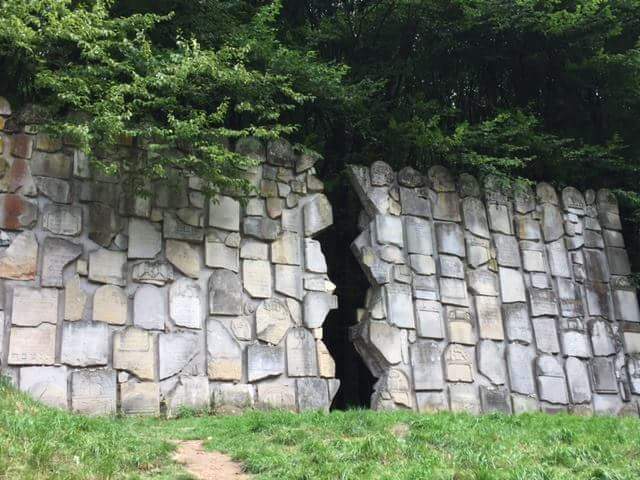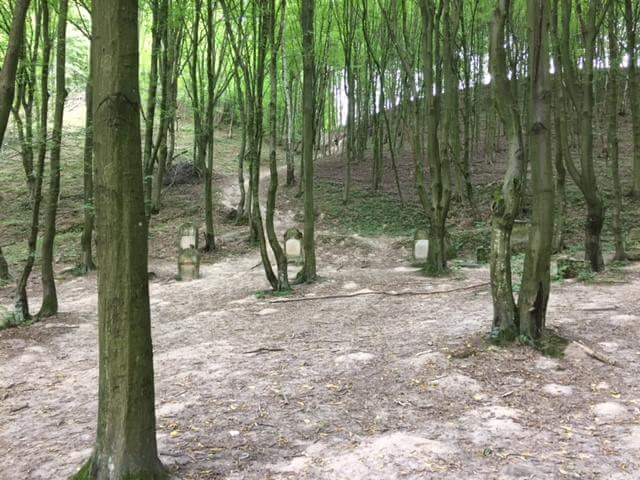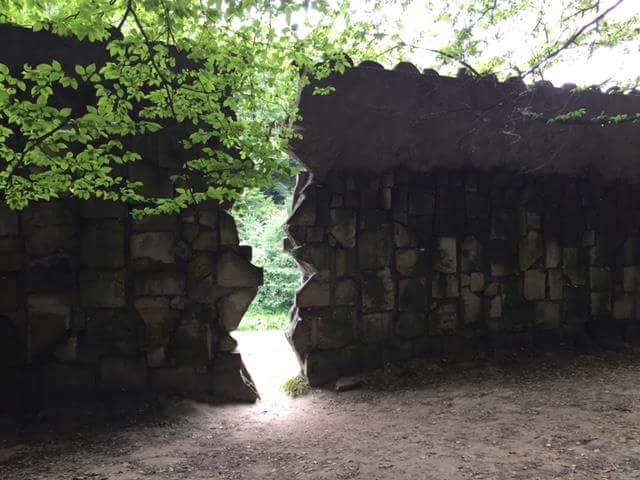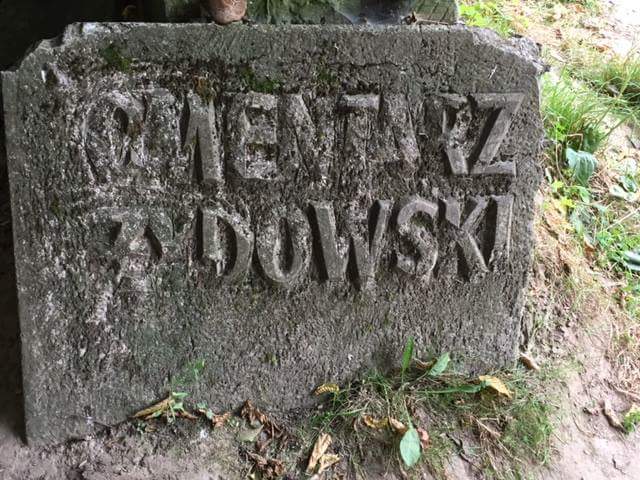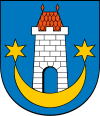
Alternate names: Kazimierz Dolny [Pol], Kuzmir, קוזמיר [Yid], Kazimierz, Kazimierz nad Wisłą, Kazimyerz, Kazimyerz Dolni, Kazmir, Kozmir, Казимеж-Дольны [Rus]. Yiddish. 51°19' N, 21°57' E, 35 miles E of Radom, 27 miles W of Lublin, 7 miles S of Puławy. 1900 Jewish population: about 1,500.
Yizkors: Pinkas Kuzmir (Tel Aviv, 1970) and Ven di Vaysl hot geredt Yidish (, 1970).[May 2009]
Jews were documented in Kazimierz Dolny on the Vistula first in 1507. The development of the Jewish community resulted from the city's position on the Vistula for rafting timber and grain. Interest came from Szmul Jakubowicz Zbytkower, a wealthy Jewish money lender and banker to King Stanislaw August Poniatowskiemu. In 1827, tzaddik Ezechiel ben Cwi Hirsz-Taub moved here (a student of famous Jakub Icchak Horowitz, the Seer of Lublin). His manor house in Kazimierz attracted numerous Chassids. Reb Ezekiel was amusically gifted composer; his motto was: "I cannot feel the joy of Shabbat without a new tune." The sons and grandson of Ezekiel led Chassidic communities in Jabłonowie, Zwoleniu, Nowy Dwor Mazowiecki, Mławie, Warsaw, Wolomin, Dęblinie and Palestine. The city is linked to the legend of Esterka. Supposedly, of the many affairs of King Casimir the Great, one apparently was this beautiful Jewish woman. According to local legend, King Casimir the Great, sometimes stayed at the castle in Kazimierz and built Bochotnica castle in a nearby village for his beautiful Jewish lover, Esterka. Supposedly, locks connected to a secret passage that lead to offspring, two sons. At the request of his royal mistress, Esterka, the king granted all Jews living in the Kingdom of Poland extraordinary privileges and freedoms. The first historical mention of the Jews is from 1507. By 1531, they were among 300 people who paid tax of 50 starozakonnych. Near the market was the synagogue, a small square building in a Jewish quarter built around the square and along ul. Lubelskiej. At the end of that street was the old cemetery. On the wall of the old synagogue, now, is a plaque inscribed "in honor of three thousand Polish Jewish citizens and former residents of Kazimierz Dolny, murdered by the Nazi occupying forces during the Second World War." The synagogue accoutrements were destroyed. A flower shop now occupies part of the building whose owners charge a fee (3 zł) to provide the key to an empty prayer classroom. The wooden building next to the former synagogue was a Jewish massacre site. Kazimierz rich Jewish heritage can be seen in Nadwiślańskiego Museum exhibitions about Judaism. At the Museum of Contemporary Art possesses the 18th-century goldsmiths' Torah breastplate, an olive oil hannukiah. The Branch Celejowskiej of the Jewish Museum in Kamienicy has a rich collection of canvases depicting prewar Jewish Kazimierz and its inhabitants and Jill Sichulski's picture representing the Jewish cemetery on Czerniawach pre-war. The room on the ground floor exhibits memorabilia from the Jews of Kazimierz: a menorah, a 19th century torah, hannukiah from the 19th century, a candlestick from a local synagogue, a ritual cup, and fragments of gravestones. In the interwar period, Kazimierz unusual architecture of the city and its residents attracted artists and writers. Artists included bracia Efraim and Menasze Seidenbeutelowie, Natan Korzeń. Poets and filmmakers and authors included Adolf Rudnicki (Summer) as well as photographers like Benedict Dorysa. The poppy emblem representing Kazimierz nad Wistula in 1910 can be seen throughout the district including at the old Jewish cemetery on ul. Lubelskiej. The Jewish past of the city is now hawked in merchant stalls with "souvenirs from Casimir" in the form of figures of Orthodox Jews. Of the population of 4640, about 3,000 (64%) were Jews before WWII. In March 1942, the Nazis deported the Jewish population to the death camp in Belzec. Jewish places were destroyed; only a small number survived. Cemetery photos. video. photos. Kazimierz Online. history. [May 2009]
photo. synagogue photo. [August 2005]
This beautiful city with a huge town square is surrounded by ancient buildings. At one time, it was an entirely Jewish town. Today, it has a carnival air. For some reason, Poles bring their children here for weekends. They were selling pizza, toys, hot dogs, flags, and taking photographs. Hundreds of children and dogs roamed the streets filled with outdoor cafes and much noise. Several bands were playing, people dancing, painters painting. Survivors restored the cemetery with great care. High on a hill, a large wall was made of Jewish tombstone shards. Many roses were planted to beautify the wall. The municipality erected a monument to commemorate the former Jewish residents. Source: Betty Starkman; e-mail: This email address is being protected from spambots. You need JavaScript enabled to view it. [Feb. 1998]
CEMETERIES:
Burial list [Jan 2015]
OLD CEMETERY:
Andrzej Jaworski in his book The Kazimierscy Jews - History, Culture, Cuisine" wrote of the cemetery: "No image of the old Kazimierz cemetery, no photographs. No one alive remembers how it looked but apparently the tomb arrangement was chaotic with many graves of significant people-merchants and wealthy-matzevot with gorgeous concave or convex ornamentation of high artistic merit. Among these was the sarcophagus of distinguished Reb Ezekiel Taub. Majer Balaban in Historical Monuments of Jews in Poland published in 1929 wrote: "At the top of the slope is a cemetery in Kazimierz on the Vistula River. ... a park...Many monuments here from the first quarter of the 19th century, several of them in the wall in separate niches. Here lies Israel Ahron ben Gad Halewi, called Der Magid. (.....) Besides him are buried Joseph Juzpa, Bethamidraszu founder, and his wife Esther". The cemetery was destroyed at the beginning of WW II. The Jews were forced to break matzevot for paving the area at the Reformed monastery, the municipal court and pathways leading to homes occupied by the Nazis. In the cemetery, the Germans built a casino and military barracks. Not even the tombstone pf tzaddik Ezekiel Taub survived. Today, the site is a children's playground. A careful observer can perceive fragments matzevot imbedded in the stone wall surrounding the playground. This unique memento reminds children that they play ball on the graves. In 1995, Kazimierz wrote in the lubelskiego issue of Gazeta Wyborcza: "Once more, go. Sometimes you can see all the skeletons, sometimes only a single bone or ribs says one of the inhabitants of Kazimierz Dolny. Human bones can be found on the slope of Góry Trzech Krzyży, in the immediate vicinity of the ulicy Lubelskiej. (...) Everyone has przyzwyczaili [?] and ... feel the bones protruding from the earth." [May 2009]
KAZIMIERZ DOLNY I: US Commission No. POCE000630 Map
Alternate name: Kuzmir (Yiddish), Kazimierz Dolny nad Wisłą. Kazimierz Dolny (I) (the old cemetery) is located in Lublin region Cemetery location: Approx. 300 m from center on Lubelska St. The town is located in Lubelskie at 51°19 21°57, 60km from Lublin and 14 km from Putawy. Present population is 1,000-5,000 with no Jews.
- Town: Miejski Konserwator Zabytkow-Muzeum Nadwislanskie, 102-77.
- Local: Roman Zwierzchowski-Miejski Konserwator Zabytkow.
- Regional: Wojewodzki Konserwator Zabytkow Lublin, ul. Archidiakonska 4 (Halina Landecka), tel. 259-37.
Earliest known Jewish community was 15th century. [Note: According to A Guide to Jewish Bialystok, p. 31: "The site for the Remuh cemetery...was purchased by the Jewish community in 1533; however, the first burial there did not take place until 1551."] 1921 Jewish population was 1382 (40.6%). Effecting the Jewish community was WWII. Living here was Hasidic Rabbi Ezechiel ben Cwi Hirs z Taub. The Jewish cemetery was established in 16th century with last Orthodox burial 19th century. The isolated urban hillside has no sign or marker. Reached by turning off a public road, access is open with permission. A broken masonry wall with locking gate surrounds. The size of the cemetery before WWll was 0.5 hectares, and is now 0.2 hectares. 1-20 gravestones in the cemetery, 1-20 not in original location, less than 25% toppled or broken. date from 18th-19th century. The limestone and sandstone flat stones with carved relief decoration have Hebrew inscriptions. No mass graves. The municipality owns site used for recreation. Properties adjacent are residential, a school building that occupies part, and the school sports field. It is rarely visited. The cemetery was vandalized during WWII and after, but not in the last ten years. No maintenance. Security, erosion, and vegetation are serious threats; vandalism and incompatible nearby development are very serious threats. The school children devastated site.
Pawel Sygowski, ul. Kalinowszczyzna 64/59, 20-201 Lublin, tel. 77-20-78 completed survey in July 1993. Documentation exists but is illegible. The site was visited 1992. Someone was interviewed but name was not given.
NEW CEMETERY:
Development of the city in 1792 links the Police Commission [Komisji Policji Obojga] order to close the full "Both Nations Cemetery" where the Kazimierz Jewish community was before the need for a new burial place. This provision was probably not strictly enforced, since only in 1851 was a new Jewish cemetery established on the slope of the ravine in Czerniawach. Motke Herzberg gave ground for the cemetery to Kazimierskiemu kahał. This cemetery also was almost completely destroyed on Nazi orders. At this cemetery were executions of Jews and Christian. After the war, the cemetery area with its eroded wall was eventually demolished in 1971 .In the 1980s, at the initiative of the Association for the Care of Kazimierz Monuments and the Office Nadwiślańskiego Museum Conservator of Historical Monuments, dozens of gravestones were gathered. For more than forty years, many thought destroyed had survived in part in quite good condition with the remnants of polychrome done by the local painter, Antoni Michalak. During WWII, Germany has suggested (allegedly in order to speed up the work) building a walk with matzevot arranged side in the ground. Recovered tombstones were used to create one of the most interesting Polish lapidaria designed by Eng. Tadeusz Augustynka. "Wailing Wall" matzevot break in the middle to symbolize the tragic fate of Polish Jews. Gravestones efforts come together as men's and women's sections, placed on the left-women's gravestones, on the right - men. Part of the matzevot are set on the left side of Lapidarium. On the other side of the monument, the beech woods, are special artistic images. These Kazimierski gravestones create a unique gallery of Jewish sepulchral art, symbolic tombs with traces of polychrome still evident. Most are made of sandstone. Matzevot with the Hebrew letters Nun Pe forming an abbreviated expression was "buried here" are in a manner similar to a man's face, a departure from the general prohibition of Judaism in the using human images. [May 2009]
"We visited Kazimierz Dolny on June 28, 1999. The synagogue is now a movie theatre. The only other Jewish building is the former Jewish meat market. It has been reconstructed, is in good condition, and is now used by the town to store municipal equipment and houses a gift-shop/art gallery. We also visited what is described as Kazimierz Dolny cemetery I: We followed the directions on the website and found the cemetery by locating the school, gate and playground (basketball court) as indicated. The school and play area were built into the hillside to the left of the main road heading out of town away from the river. First, you see the ball court and play area, then the school and then the gate. We entered the gate and met a man who came out of the school and appeared to be a school employee. We told him we were looking for the cemetery. He said it was up on the hillside behind the school and that it was very difficult to climb up and little to see. We persisted. He directed us to climb up the hill at the back of the school building. It was very rough going, as it was steep with no real path. The hillside is completely overgrown. We climbed up further through the brush and trees and found what appeared to be a stone wall, parallel to the back of the school just a few feet long. There were many many broken stones that might or might not have been headstone fragments. There were no headstones visible in any place that we could see. There was a LOT of erosion and empty bottles around. Unfortunately, and much to our surprise, some of the graves unearthed as we found what appeared to be human bones on the ground. We covered the bones we found, said Kaddish, and left that area (quickly) in search of what is described on the website as cemetery II at Kazimierz Dolny. I conclude that no maintainence is done. It is perhaps used "recreationally" by someone (beer bottles) and is badly eroded. I was saddened by the conditions we found. We were glad when we reached cemetery II. Also built into a hillside, the cemetery is maintained. Brush is cleared; lawn is cut. Many beautiful headstones are on the ground (apparently in-place). I do not know how many are actually in their original place. There was a monument erected to the victims of the Holocaust made out of fragments of gravestones. The website indicated that this monument is enhanced with planted flowers. This is no longer the case. It is just cut grass all around. Unfortunately, there was a little anti-Semitic graffiti on the back of the monument. All in all, it was in good shape." Source: Rachel Stamieszkin: This email address is being protected from spambots. You need JavaScript enabled to view it.
Vandals desecrated tombstones in Kazimierz, the ancient Jewish quarter of Krakow. Source: Dateline World Jewry; World Jewish Congress. 4/1997
burial list and grabestone photos [August 2014]
KAZIMIERZ DOLNY II: US Commission No. POCE000631
Kazimierz Dolny (II), the new cemetery, is approx. 1 km SE of the center. For town information see Kazimierz Dolny (1). The new Jewish cemetery was established in 1851 with last Orthodox burial 1942. The cemetery is listed as a monument (886/84). The isolated suburban hillside has a plaque in Polish mentioning Jews and the Holocaust. Reached by turning directly off a public road, access is open to all with no walls or gate. The size of the cemetery before WWII was 1.2 hectares, now it is 0.9 hectares. 600 gravestones, only 1-20 in original locations and 50-75% toppled or broken, date from 1850's-20th century. The sandstone and other material flat with carved relief decoration, some with traces of painting on their surfaces, have Hebrew inscriptions. There are special memorial monuments to Holocaust victims. No mass graves. Regional or national governmental agency owns site used as a Jewish cemetery only. Properties adjacent are residential. The cemetery area is smaller due to agriculture. Frequently, private visitors stop. The cemetery was vandalized during WWII. Local authorities patched broken stones in 1985. Authorities clean or clear occasionally. The government pays the caretaker. Security, vegetation, and vandalism are moderate threats. For survey information, see Kazimierz Dolny (1).
Location: ulica Czerniawy, a monument erected of about 1,000 tombstones destroyed during World War II. [Source?]
REFERENCE: Gruber, Ruth Ellen. Jewish Heritage Travel A Guide to East-Central Europe. New York: John Wiley & Sons, Inc., 1992. p. 49-5
Photos courtesy This email address is being protected from spambots. You need JavaScript enabled to view it. [July 2015]
Kazimierz Dolny cemetery was devastated during WWII with the matzevot used to pave roads and other areas. Today, this lapidarium holds many of the fragments collected over the years. [August 2017]
Photos from Facebook [August 2017]






